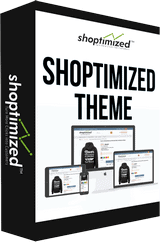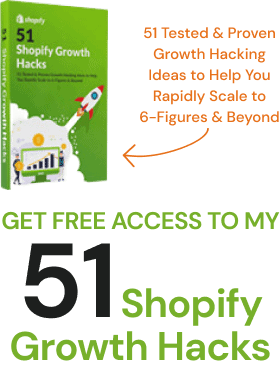Product pages serve as a crucial touchpoint in the customer journey. One of the first things you will need to do when setting up your Shopify store is determine your product page layout because it’s where first impressions are made and buying decisions are influenced.
Since customers cannot feel, see, hear, or smell the actual products they’re buying, 87% of them believe that product content is one of the top factors for making decisions.
Consequently, a well-crafted product page persuades website visitors through clear, compelling content, and visuals.
In this blog, we’ll explore the basic components of how to structure your product page to be irresistible. We start from top to bottom highlighting various elements like high-quality images and payment info that you should include in your Shopify product page today.
What makes a Shopify Product Page “Good”?
First, we need to address the question what makes a Shopify product page “good”? To put it simply, a product page is doing its job if it converts. When you take into account that the average conversion rate for Shopify is around 1.5-2%, you should use this rate to gauge the effectiveness of your product pages.
More importantly, you’ll need to determine if your product pages are helping or hurting your Shopify store.
To evaluate whether your product page is boosting or hindering conversions, we encourage you to track essential metrics like bounce rate, conversion rate, and time on page. A/B testing is crucial to observe variations in these metrics.
By methodically testing various aspects of your page, you can pinpoint modifications that enhance conversion rates. This analytical method enables you to make well-informed choices, gradually optimizing your product pages to convert more visitors into customers.
Start your A/B testing with these strategies:
- Experiment with the positioning of your CTA button.
- Try different wording for product descriptions.
- Rearrange the layout of product images.
Now let’s dive into the industry’s best practices for building irresistible Shopify product pages from top to bottom.
When you first look at a product page, your eye is naturally drawn to the product image first.
High-quality images and videos are essential for high-converting pages as they visually communicate the value and quality of your product.
Crisp, detailed images allow potential customers to envision the product in their lives, while videos can demonstrate features and benefits in action. Together, they provide a more dynamic and engaging presentation that builds trust and confidence in your product.
Low-quality images and product videos can lead to distrust in a brand and a damaged reputation. So be careful to ensure your photos have these key features:
- Clarity and Resolution: Images and videos should be sharp and clear, with high resolution to ensure they look professional and detailed, even when zoomed in.
- Lighting: Good lighting is crucial to highlight the product’s features and colors accurately. Natural light or well-placed artificial lighting can make a significant difference.
- Demonstration: Videos should demonstrate how the product works, its features, and its benefits, providing a realistic portrayal that can influence purchasing decisions.
- Editing: Professional editing will enhance the visual appeal of photos and videos giving that polished feel and look.
Clear & Concise Headlines
Your headlines should be short and sweet leaving out room for ambiguity. The viewer’s eye will trail from left to right and towards the headline due to its position at the top of the page and larger font size.
Each product page should include a headline that states the value proposition of the product.
Compelling Product Descriptions
Next on the list are compelling product descriptions that include the product’s price. The price is the second largest font or H2 on the product page designed to be conspicuous.
If product descriptions are untruthful, they’re more likely to break trust and 87% of customers are unlikely to repurchase in that case.
Well-written product descriptions speak to the end result each product brings its buyer. Whether that’s through a problem your product resolves or a certain benefit it adds.
Ultimately, great product details should make the reader visualize the positive impact of owning your product.
Here’s an example of what that looks like for an example product called “FlashDash Sneakers”.
Experience the ultimate comfort with our FlashDash Sneakers!
- Revolutionary shock system for joint protection.
- Sleek, lightweight design for speed and style.
- Perfect for athletes and avid runners seeking a blend of performance and comfort on every run.
Clear Call-to-Action (CTA)
As we move down the product page, you’ll notice the call to action (CTA). It guides the customer towards the desired step you want them to take, whether that’s “Add to Cart,” “Buy Now,” or “Subscribe.”
The CTA should be prominently placed and use action-oriented, persuasive language. For example:
- “Grab Yours Today!” for a sense of urgency.
- “Secure Your Discount Now!” for a special offer.
- “Join the Adventure!” for a product related to travel or outdoor activities.
Payment & Shipping Information
Conveniently placed underneath the CTA should be all of the necessary payment and shipping information a customer needs. This includes details on shipping options, costs, and return policies to set clear expectations. This is also a viable way to build trust with shoppers.
You’ll want to streamline the checkout process to ensure potential customers experience the least path of resistance. This will also help reduce abandoned carts. Shopify partnered with Boston Consulting Group in a study that discovered the use of accelerated payment like Apple Pay, Google Pay, Paypal, etc. can increase low funnel conversion rates by 50%.
Best practices to remove obstacles from the checkout process are to enable one-click checkout, offer express payment options, and minimize form fields.
Social Proof and Reviews
Finally, incorporating social proof, such as customer reviews and ratings, is an effective strategy to establish trust and credibility on your Shopify product pages.
Failing to showcase positive feedback prominently means you’re overlooking a chance to reassure potential buyers about your product’s quality and effectiveness. 97% of shoppers say that online reviews influence their purchasing decisions.
On Shoptimized’s store, we’ve included a social proof pop-up banner that automatically displays on the customer’s screen as they browse. To see it in action, view our demo store right now!
Here are a few additional ways to implement social proof:
- Consider using a review widget that allows for easy sorting and filtering
- Highlight standout testimonials
- Showcase any industry awards or certifications that can further enhance your product’s perceived value and reliability.
Conclusion
This is just an overview of the best Shopify product page practices. In addition to knowing what to put on your product page from a sales point, we hope you gained the perspective from a design stance too.
By focusing on concise headlines, high-quality images and videos, compelling product descriptions, clear calls-to-action, detailed payment info, and credible social proof, you can create an engaging and persuasive online shopping experience for your customers. Every product page layout should include these 6 key elements.
If you want to dive deeper into high-converting product pages, check out this article!
Remember, your product pages are the gateway to your brand’s success. That’s why we recommend Shoptimized. Voted 2022’s #1 Converting Theme, it includes over 30 built-in features designed to boost sales. Complete with lightning-fast load times and mobile optimization, it’ll help your Shopify product pages convert browsers into buyers.
Download Shoptimized today to start improving your online store.


